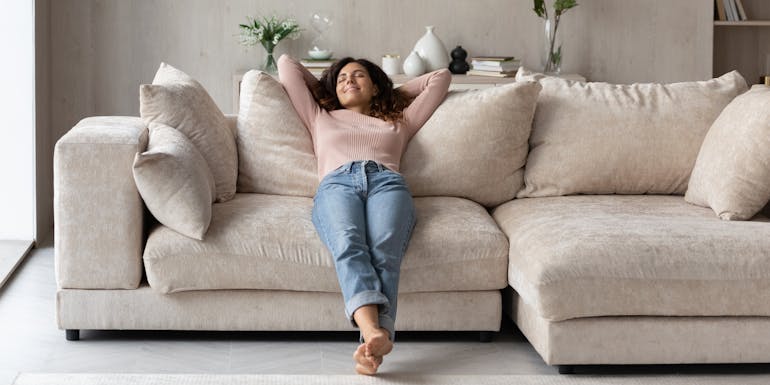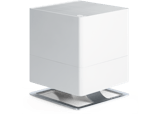
Guest author, 16 August 2022
Measure humidity
Humidity and health: creating the right balance with the right indoor climate
The term humidity generally only crops up when there is too little or too much of it. However, it is not just in poorly ventilated office spaces or the sticky heat of indoor rainforests when that is the case: it can sometimes also be the case within your own four walls. The right – or a healthy – level of humidity plays a key role for our well-being, especially at home.
We find our inner centre by practising yoga, groan during our daily workout, go to bed early and don’t indulge in eating pizza too often but instead feast on nutrient-rich, regionally grown organic fruit and vegetables: In fact, we do almost everything we can to ensure a healthy and sustainable lifestyle. But only almost: when we focus on a balanced everyday life and a conscious approach to our environment, ensuring the correct level of humidity gets forgotten about. And that’s a shame, especially since a room in which the humidity is too low or too high not only leaves you feeling uncomfortable but can also actually be harmful to your health. Only: what level of humidity is healthy – and what is the right indoor climate?
Dry air – what can we do about it?
If the relative humidity is constantly below 40 per cent, the level of humidity is described as being low – as is often found during the winter. If the humidity is too low, it can be harmful to people’s health, for example, because if the air is too dry, our mucous membranes don’t get the moisture they need. The consequences? Respiratory problems and dry eyes, an irritating cough, a dry throat, general feelings of dryness, eczema or conjunctivitis. These symptoms affect people with allergies, contact lens wearers, children and the elderly particularly badly, especially since viruses survive longer in rooms where there is a low level of humidity, thus increasing the risk of infection. Your quality of sleep can also suffer: if you complain of problems with snoring or wake up in the morning with an unpleasantly dry and scratchy throat, it is usually due to the indoor climate being too dry. The solution? Buy a humidifier. It will increase the relative humidity to a healthy and pleasant level of 40-60%: an effective way not only to improve the climate indoors as well as mental and physical well-being but also to promote good health.
Danger to health due to excessive humidity
Signs of excessive humidity include misted-up windows, musty stuffy air and, in the worst cases, damage to walls and ceilings. If the level of relative humidity is too high (over 60 per cent), it can promote the growth of harmful mould in a room and provide the ideal breeding ground for pathogens such as house dust mites. A high level of humidity can pose a risk to the health of people who already have health problems in particular, since too much moisture in the air indoors can also exacerbate allergy and asthma symptoms. It can also cause problems from a psychological point of view: if there is a high level of humidity – at worst in conjunction with hot weather – the body is less able to cope and it puts a strain on the human organism as it is unable to lose much heat. As a result, that familiar feeling of listlessness sets in. On top of that, excessively high humidity can make it difficult for us to sleep. One way to counteract this unsatisfactory situation which is potentially harmful to health is to purchase a dehumidifier that will reduce the relative humidity to a healthy level. This will increase our level of physical energy and make us feel more balanced, both mentally and psychologically.
What level of humidity is healthy?
So the right level of humidity not only makes life indoors more pleasant: the ideal indoor climate will support our immune system, improving our health and helping us get a restful night’s sleep. The effects on our mental well-being should not be underestimated either: we feel better, more vital and more able to focus in rooms where there is a healthy level of humidity. In order to be able to check on a regular basis that the ideal humidity value (between 40 and 60 per cent) is being maintained indoors, it is a good idea to purchase a hygrometer. These measuring stations monitor the relative humidity continuously and indicate whether the indoor climate is conducive to our health and our well-being.
Conclusion
It can therefore be concluded that it is worth creating a health-promoting level of humidity. Just like a hygrometer, humidifiers and dehumidifiers are worthwhile purchases that can make our lives not just healthier but also a lot more enjoyable.
If you have questions related to indoor room climate, please get in touch with us. Or subscribe to our newsletter to regularly get informed about current topics regarding indoor climate, experience reports or Stadler Form insights.
Guest author of this article is Patrick Schenk from Pantara - many thanks!









